Warum Sie über die Investition in eine Batteriebox nachdenken sollten. Der ultimative Leitfaden zu Batteriespeicherlösungen.
Gründe für die Investition in eine Batteriebox für effektive Batteriespeicherlösungen
Ein Batteriekasten ist eines der praktischsten und wichtigsten Zubehörteile für alle, die Batterien in netzunabhängigen, maritimen, Wohnmobil- oder Solaranwendungen nutzen. In diesem umfassenden Leitfaden erläutern wir, warum die Investition in einen Batteriekasten eine kluge Entscheidung für Sicherheit, Komfort, Langlebigkeit und Ordnung ist. Ob Solar-Heimwerker oder Bootsbesitzer – das Verständnis für den Nutzen eines Batteriekastens kann die Effizienz und Sicherheit Ihres Energiespeichersystems verbessern. Für sichere und effektive Batteriespeicherlösungen bietet ein hochwertiger Batteriekasten eine professionelle und zuverlässige Grundlage.
- Warum eine Batteriebox für die Batteriespeicherung unerlässlich ist
- Verschiedene Arten von Batteriekastenkonfigurationen
- Wichtige Merkmale, auf die Sie bei einem Batteriekasten achten sollten
- Wie eine Batteriebox die Batterielebensdauer verlängert
- Sicherheitsvorteile der Verwendung eines Batteriekastens
- Batteriekastenanwendungen in verschiedenen Branchen
- Anpassen eines Batteriekastens für spezielle Anforderungen
- So installieren Sie einen Batteriekasten richtig
- Wartungstipps für Ihre Batteriebox
- Umweltvorteile durch die Verwendung eines Batteriekastens
- Wirtschaftliche Vorteile einer Batteriekasteninvestition
- Vergleich beliebter Batteriekastenmarken
- Optionen für selbstgebaute oder handelsübliche Batteriekästen
- Innovationen im Batteriekastendesign
- Warum Sie in eine Batteriebox investieren sollten
Warum eine Batteriebox für die Batteriespeicherung unerlässlich ist
Schutz vor physischen Schäden
Ein Batteriekasten schützt die Batterie vor Stößen, Vibrationen, Feuchtigkeit und anderen physischen Gefahren. Dies ist entscheidend für mobile Anwendungen wie Wohnmobile und Boote, wo Bewegungen ungeschützte Batterien lösen oder beschädigen können.
Eindämmung von Säure und Leckagen
Blei-Säure-Batterien können Gase abgeben oder Säure austreten lassen. Ein gut konzipiertes Batteriegehäuse fängt Lecks auf und leitet Gase sicher ab. Dadurch werden Schäden an benachbarten Komponenten vermieden und Gesundheitsrisiken verringert.
Einhaltung von Vorschriften
Für Marine- und Off-Grid-Systeme sind Batteriegehäuse häufig erforderlich, um Sicherheits- und Versicherungsvorschriften zu erfüllen. Mit einer Batteriebox erfüllen Sie diese Standards mühelos.
Verschiedene Arten von Batteriekastenkonfigurationen
Standard-Batteriekasten aus Kunststoff
Diese sind kostengünstig und werden häufig in Automobil- und Schiffsanwendungen eingesetzt. Sie umfassen normalerweise einen Deckel, einen Zurrgurt und manchmal Kabelanschlüsse.
Hochleistungs-Batteriekasten
Die für raue Umgebungen konzipierten Hochleistungsmodelle bieten zusätzlichen Schutz, Verriegelungsmechanismen und dickere Wände für überragende Haltbarkeit.
Intelligente Batteriebox
Diese fortschrittlichen Modelle verfügen über USB-Anschlüsse, Voltmeter, Leistungsschalter und Anderson-Anschlüsse und eignen sich daher perfekt für tragbare Kraftwerke und Solaranlagen.
Wichtige Merkmale, auf die Sie bei einem Batteriekasten achten sollten
Lüftungsdesign
Ein guter Batteriekasten muss für eine ausreichende Belüftung sorgen, um die Bildung explosiver Gase wie Wasserstoff zu verhindern, insbesondere in geschlossenen Räumen.
Kabelmanagement
Integrierte Anschlüsse oder Durchführungen für Kabel sorgen für ein sauberes und übersichtliches Layout, verhindern Schäden und verbessern die Sicherheit.
Wasserdichte und UV-beständige Materialien
Wetterbeständige Materialien stellen sicher, dass Ihr Batteriekasten den Bedingungen im Freien standhält, ohne mit der Zeit an Qualität zu verlieren.
>>Siehe auch: Was ist der ideale Ladezustand für eine 48-Volt-Golfwagenbatterie?
Wie eine Batteriebox die Batterielebensdauer verlängert
Stabile Umgebungsbedingungen
Ein Batteriekasten isoliert die Batterie vor extremen Temperaturen, verringert das Risiko thermischer Schäden und verlängert die Lebensdauer.
Verhindert Anschlusskorrosion
Durch das Abdichten gegen Feuchtigkeit und Verunreinigungen wird die Korrosion der Anschlüsse verringert, die andernfalls zu Leistungseinbußen und einer verkürzten Batterielebensdauer führt.
Sicherheitsvorteile der Verwendung eines Batteriekastens
Funken- und Kurzschlussschutz
Der Batteriekasten dient als Barriere zwischen den Batterieklemmen und externen leitfähigen Materialien und verringert so das Risiko von Kurzschlüssen und Funken.
Sicherheit von Kindern und Haustieren
In Heim- oder Garagenumgebungen verhindert ein Batteriekasten, dass neugierige Kinder und Haustiere an gefährliche Batteriepole und -säuren gelangen.
Batteriekastenanwendungen in verschiedenen Branchen
Wohnmobile und Camper
Batteriekästen sind ein fester Bestandteil von Freizeitfahrzeugen, wo mobile Stromversorgungssysteme vom strukturellen Schutz und der übersichtlichen Anordnung profitieren.
Marine und Bootfahren
Bei Booten gewährleistet ein Batteriekasten in Marinequalität die Einhaltung der Vorschriften der Küstenwache und widersteht gleichzeitig der Korrosion durch Salzwassereinwirkung.
Solar-Inselnetzsysteme
In netzunabhängigen und Solarstromsystemen bietet ein Batteriekasten einen zentralen und geschützten Ort zur Unterbringung mehrerer Batterietypen und -größen.
Anpassen eines Batteriekastens für spezielle Anforderungen
Dual-Batterie-Setups
Für viele Konfigurationen sind mehrere Akkus erforderlich. Ein Doppelakkufach ermöglicht eine kompakte, nebeneinander liegende Lagerung bei gleichzeitiger Wahrung der Verkabelungsordnung und Sicherheit.
Integrierte Messgeräte und Leistungsschalter
Einige Benutzer installieren ihre eigenen Voltmeter, Sicherungen oder Leistungsschalter im Batteriekasten, um die Benutzerfreundlichkeit und Überwachung zu verbessern.
So installieren Sie einen Batteriekasten richtig
Auswahl des richtigen Montageorts
Wählen Sie eine trockene, stabile Oberfläche mit ausreichend Platz für Belüftung und Zugang. Berücksichtigen Sie die Nähe zu stromverbrauchenden Geräten.
Sichern der Box
Verwenden Sie Gurte oder Montagehalterungen, um Bewegungen zu verhindern. Dies ist besonders wichtig bei mobilen Installationen wie LKWs oder Anhängern.
Wartungstipps für Ihre Batteriebox
Regelmäßige Reinigung
Reinigen Sie die Innen- und Außenseite mit einem feuchten Tuch, um Staub und Korrosion zu entfernen. Vermeiden Sie aggressive Chemikalien, die den Kunststoff angreifen könnten.
Inspektionsroutine
Überprüfen Sie regelmäßig Kabelverbindungen, Belüftungsöffnungen und Dichtungen, um sicherzustellen, dass alles sicher und funktionsfähig bleibt.
Umweltvorteile durch die Verwendung eines Batteriekastens
Reduziertes Risiko einer Boden- und Wasserverschmutzung
Durch die Eindämmung von Lecks und verschütteten Chemikalien trägt ein Batteriekasten dazu bei, die Umwelt vor batteriebedingten Schadstoffen zu schützen.
Fördert das Batterierecycling
Eine geordnete Lagerung fördert eine verantwortungsvolle Entsorgung und Wiederverwertung und verlängert so die nachhaltige Lebensdauer von Batteriesystemen.
Wirtschaftliche Vorteile einer Batteriekasteninvestition
Weniger Batteriewechsel
Durch die Verlängerung der Batterielebensdauer durch physischen Schutz und Klimakontrolle spart eine Batteriebox auf lange Sicht Geld.
Geringere Systemausfallzeiten
Gut gewartete Batterien bedeuten weniger Unterbrechungen der Stromversorgung, was besonders bei kritischen Systemen wichtig ist.
Vergleich beliebter Batteriekastenmarken
NOCO HM318BKS
Eine beliebte Wahl für den Einsatz auf See und in Wohnmobilen, bekannt für sein robustes Design und seine Kompatibilität mit Batterien der Gruppen 24–31.
Renogy Smart Lithium-Batteriebox
Bietet integrierte Überwachung, Solarladeanschlüsse und USB-Ausgänge – ideal für tragbare Solaranwendungen.
Minn Kota Trolling Motor Power Center
Diese Box ist speziell für kleine Boote und Kajaks konzipiert und verfügt über eingebaute Sicherungen und externe Anschlüsse.
Optionen für selbstgebaute oder handelsübliche Batteriekästen
Vorteile einer DIY-Batteriebox
Ein großer Vorteil ist die individuelle Anpassung. Sie können die Größe genau an Ihre Bedürfnisse anpassen und spezielle Funktionen hinzufügen.
Wann Sie sich für eine kommerzielle Box entscheiden sollten
Wenn Sicherheitszertifizierungen, Garantien oder Plug-and-Play-Komfort wichtig sind, ist ein kommerzielles Produkt oft die beste Wahl.
>>Siehe auch: So wählen Sie die Batteriemarke mit der längsten Lebensdauer
Innovationen im Batteriekastendesign
Modulare Systeme
Stapelbare und erweiterbare Batteriekastendesigns ermöglichen eine einfache Skalierung des Systems bei steigendem Energiebedarf.
Intelligente Überwachung
Bluetooth- und Wi-Fi-Konnektivität ermöglichen die Fernüberwachung von Batteriespannung, Temperatur und Ladezustand.
Warum Sie in eine Batteriebox investieren sollten
Von Sicherheit und Konformität bis hin zu Leistung und Langlebigkeit – die Vorteile einer Investition in einen Batteriekasten sind beträchtlich. Ob für netzunabhängiges Wohnen, den Einsatz auf See, Wohnmobilreisen oder Notstromsysteme für zu Hause – ein hochwertiger Batteriekasten ist ein wesentlicher Bestandteil jeder Energiespeicheranlage. Er vereinfacht die Verkabelung, verbessert die Sicherheit und verlängert die Batterielebensdauer.
Wenn Sie Ihre Energieinvestitionen schützen und langfristige Zuverlässigkeit gewährleisten möchten, sollten Sie jetzt überlegen, wie ein Batteriekasten Ihren Energiebedarf decken kann. Bei richtiger Verwendung ist ein Batteriekasten mehr als nur ein Behälter – er ist ein wichtiger Bestandteil Ihres Batteriemanagementsystems.
Wenn Sie heute handeln und in eine Batteriebox investieren, verlängern Sie nicht nur die Lebensdauer Ihres Energiesystems, sondern verbessern auch die Sicherheit, Effizienz und Umweltverträglichkeit. 

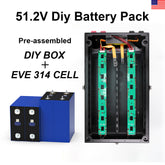

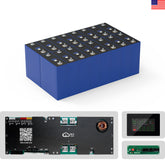

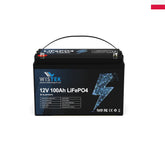
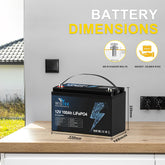

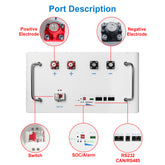
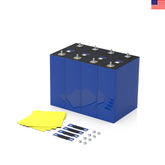
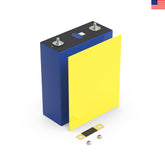
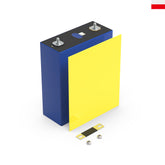

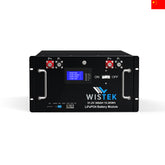
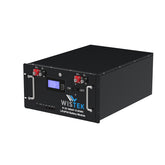








Leave a comment
All blog comments are checked prior to publishing